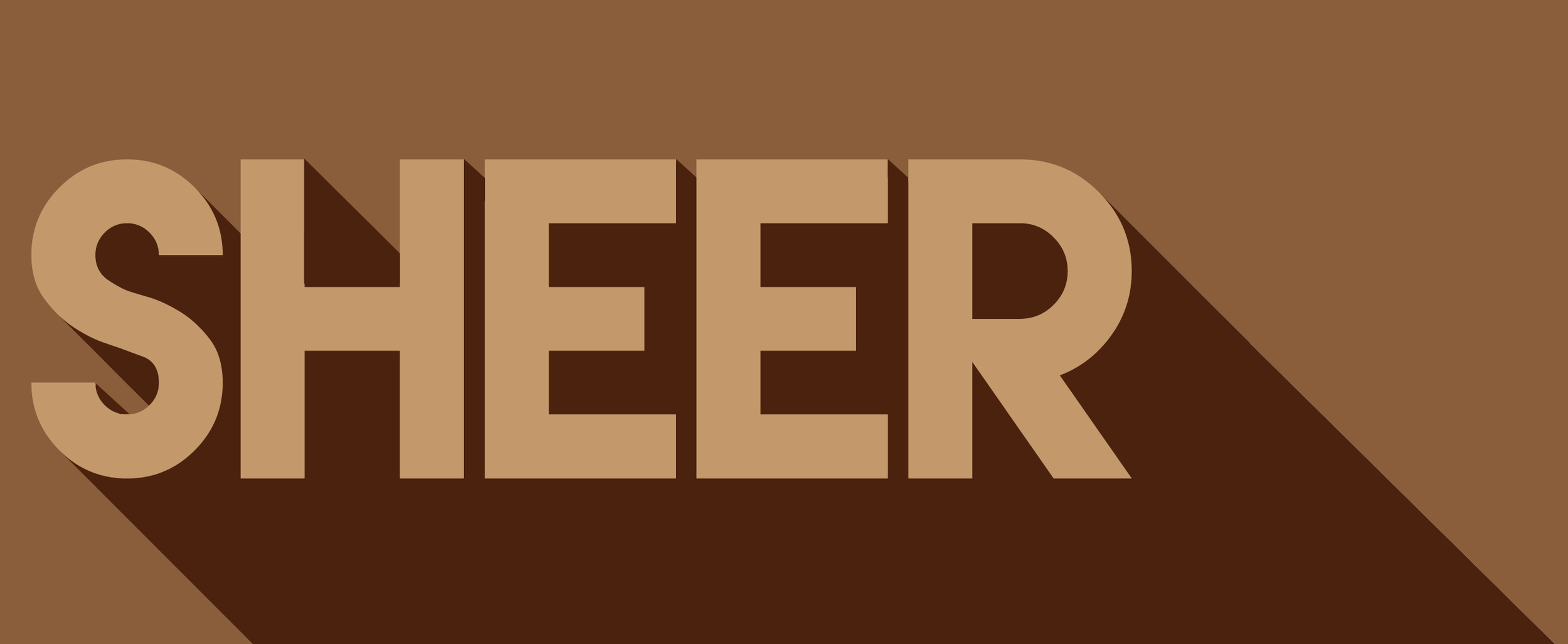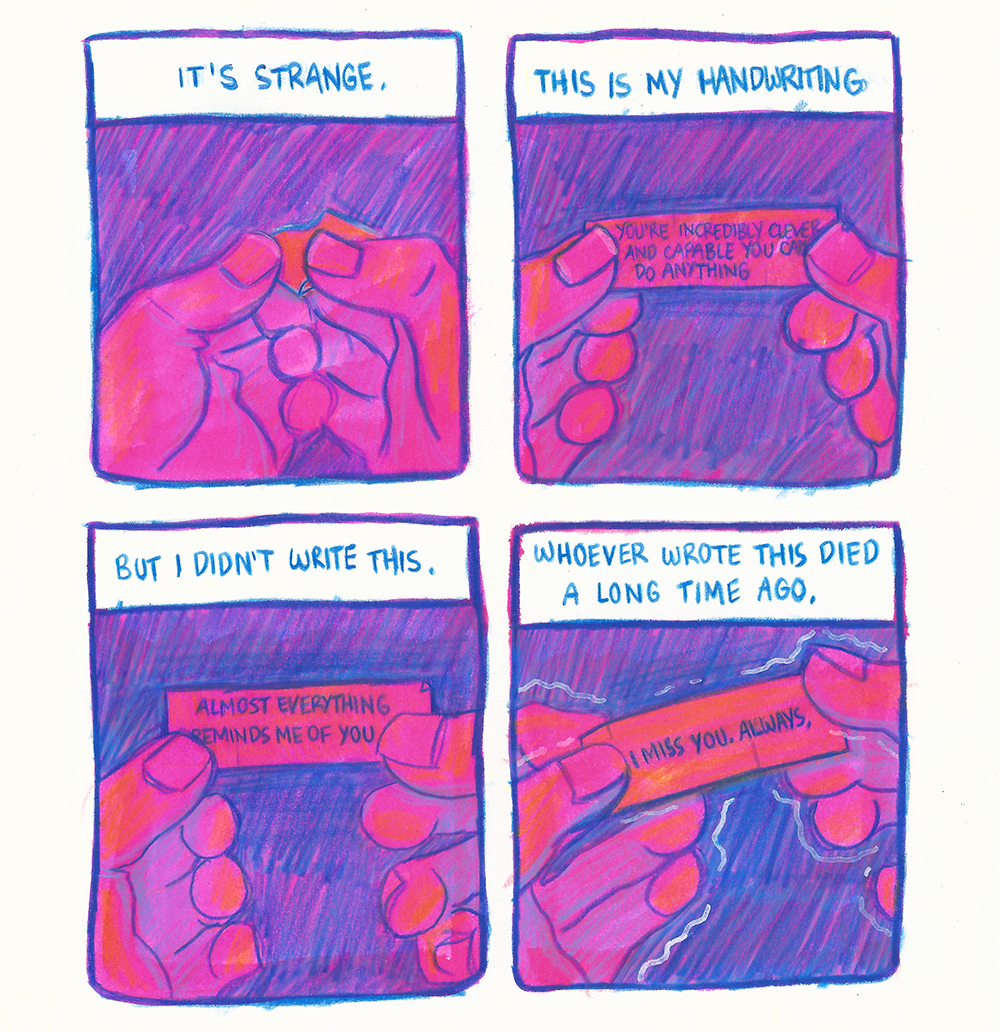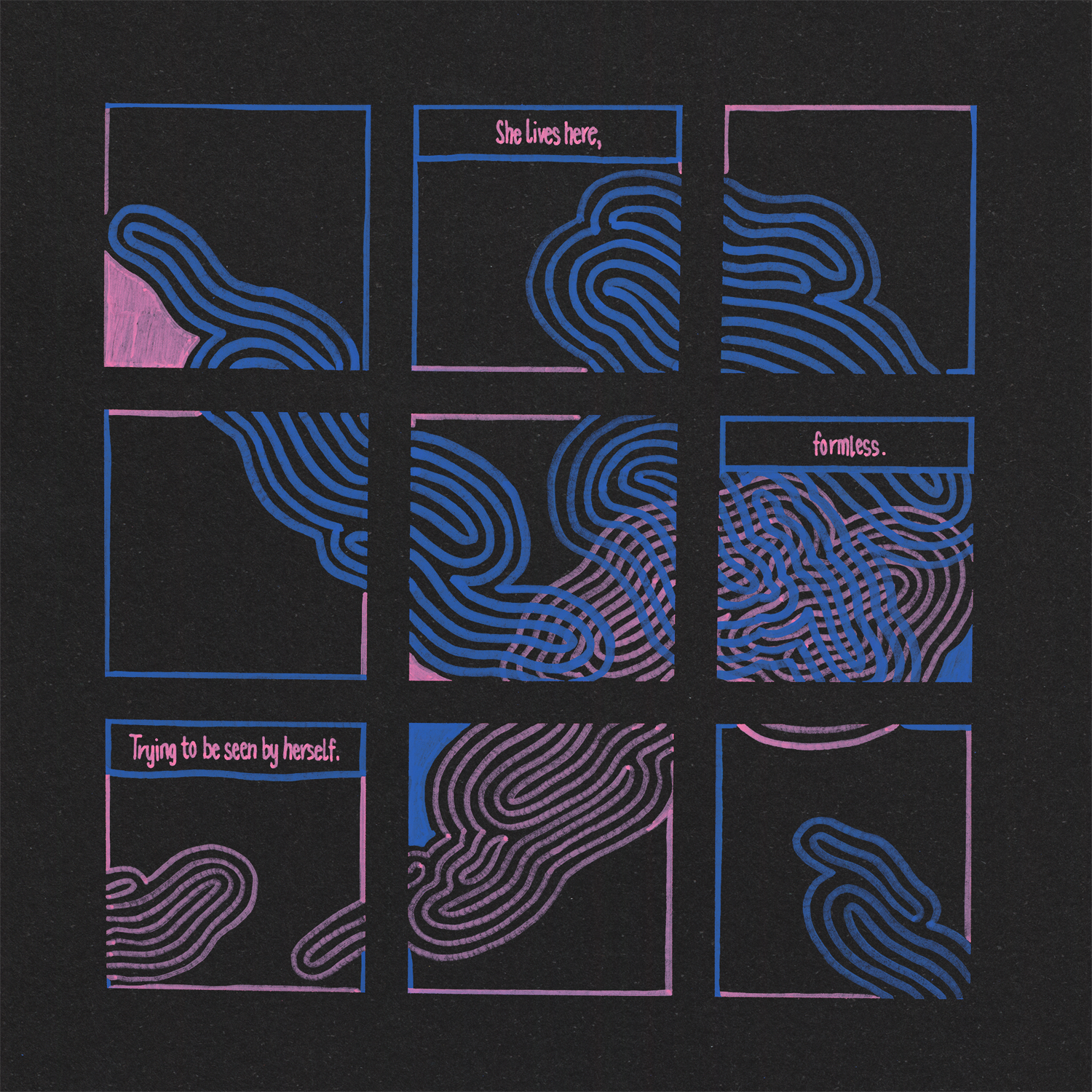ARTISTS TO KNOW: CLAUDIA CHINYERE AKOLE
CLAUDIA CHINYERE AKOLE
A multidisciplinary artist exploring mental health and cultural identity through comics, animation, and 3-D design.
SHEER: Tell us a little bit about yourself?
CLAUDIA CHINYERE AKOLE: I’m a first generation Aussie gal born and raised in Sydney, Australia (traditional lands of the Gadigal and Wangal peoples of the Eora Nation). My mother is Armenian-Iranian and my father is Nigerian. My mother raised me and my older sister as a single parent, so culturally I’ve had the most proximity to my Persian side. Like most mixed/first gen immigrant kids in a Western country, reconciling my identity is... a bit complicated. I suppose “Armenian-Iranian-Nigerian-Australian” is a bit of a mouthful, but here I am!
SHEER: What are the top themes or subjects that inspire your work?
CCA: I’m a fairly introspective person, which I actually think is mostly a detriment to me at a social and existential level... I often lament that I feel trapped in my own head most of the time. But the result is that it fuels most of what I create. I’d hate to pigeon-hole myself, but most of my work always comes back to representing my own lived experiences — anxiety, depression, and mental health; cultural identity; social identity; womanhood and femininity; sexuality.
It doesn’t feel right to use the word “inspire”. I’m not really “inspired” by these things to make the things that I make — I just use art as a means to express, understand, or discover things about myself,formyself. And sharing these things seemingly resonates with other people, much to my continuous surprise.
SHEER: What led you to illustration and cartoons as a creative outlet or did you try other forms of expression before finding your niche?
CCA: One of the biggest issues I’ve always had with art, is that I love absolutely everything I learn. I started studying Design in Visual Communication before I transferred and then graduated at a different Uni in Animation and I actually majored in 3D animation. But over the years I’ve never been any less enamoured with any medium over another medium I try. I love traditional drawing and painting, I love animation, I love 3D, I love printmaking, I love graphic design (u could say it’s my passion lmao), I love comics, I love illustration. But I don’t necessarily mean I actively practice all of this stuff, of course. There’re only so many hours in the day.
When I started studying Design, I was buzzing with interest — even now, years on, I could drone for ages about the intricacies of typographic line height affecting readability vs legibility, or the dissemination of the printing press, or the Basic Principles of Design. Then I felt similar about Animation as a medium and Film as a media. I’m terribly passionate, conceptually, about design’s role in our everyday lives. But that’s not what my work is about, since my work is simply a personal outlet. I suppose I fell into illustration and comics with the most sincerity, in that regard, because I think they’re the most accessible mediums to express myself with. Which I’ll elaborate on below.
SHEER: How have your life experiences influenced your aesthetic style?
CCA: I often get complimented or questioned about my style, and I know it’s always a go to for young/inexperienced artists (or artists in general) to really, really, fixate on how to distinguish themselves with a distinct “style”. One of the biggest things I’ve learned within myself —and I’m not saying this is gospel— is that:
Style is a symptom of your creative practice, and not a goal that you can work towards.
I’ll use an anecdote. When I was 20, I started transitioning to natural hair, after having relaxed/straightened it since I was like 9. At the time I was undergoing a huge reformation of my self esteem. I had a less than supportive boyfriend at the time, I’d never had African relatives in Australia to learn from about taking care of natural Afro hair, I felt ugly and confused.
Over the years I taught myself from scratch with the help of natural hair Youtubers and an incredible amount of trial and error. But more-so than the actual hair, I had to teach myself to see black women as beautiful. So I started surrounding myself with it. I started following blogs and vlogs and instagrams and artists who were Black. And appreciating other people who looked like me and had similar experiences to me... made it easier to appreciate myself, and accept myself.
At the same time, I realised something about my drawing practice. Why had I never drawn brown or black people in my art? Why is everyone light-skinned? The coward’s answer is that you don’t know how or that you’re not good at it, but I didn’t think this was an acceptable excuse. Like everything else in life, we’re all socialised to see white as the default, so I’d never even thought about it. Similarly to real life, I had to reflect myself in my own art if I wanted to truly accept myself. So I started drawing on brown paper. ‘If the default shade I’m starting with is always darker, then I have no excuse’ was my rationalization.
For 3 years straight I only drew on brown paper. For EVERYTHING. Before the last couple of years I didn’t own a single white sketchbook. Every scrap of paper doodle, every finished drawing. If you scroll back on my instagram feed you can see it. The funny thing is that I soon came to realise that I favoured abstraction and surrealism as an artistic outlet, rather than drawing people. But the change within myself was enacted regardless. From then on, my mental switch was that every person I draw (who wasn’t based on real people of course) was black or brown by default. I was my own default. My “style” in this period of my life wasn’t a goal I was striving to, it was the result of bigger decisions I’d made in my life.
So, at present, my creative style is still wholeheartedly a symptom of my practice, it’s just changed with my practice over time. The cornerstone of that practice, is that drawing is an outlet for me to express or explore my own issues. And in that regard, I love the physicality of drawing. Drawing with my hands on real paper in real life is a cathartic exercise second to none. Drawing on computers makes me feel icky. The reason I started making abstract illos was because putting a line on a page without thinking too hard about the end result is the most liberating feeling I’ve ever encountered in art-making. It’s easy to do when I’m too anxious or nervous to think or concentrate.
A lot of my practice has transformed into mostly using POSCA markers, tracing paper, and sometimes thick drawing paper. Drawing with paint markers is an almost contradictory exercise in pleasuring myself and torturing myself — I can enjoy the physical process of drawing something in real life, with my own two hands, but the medium forces me to follow certain rules. I only have solid colours to work with, I can’t easily vary line weight, I can’t easily include a lot of detail.
Tracing paper is a great tool in the mid process of creating comics, and doesn’t really feature in finished art, but I realised it was my favourite part of the process so I just started using it for everything as much as I could, especially finished art. The combination means I spend a lot of time thinking about how to simplify my work in ways to solve the design problems I’ve created for myself by using these materials.
Basically I get a lot of pleasure from creating problems for myself and seeing what I can do within a limit. As much as brown paper still holds a special place in my heart, I ultimately moved away from it because from a printmaking/reproduction stance, it’s incredibly hard to work with for reprint. I mean I made do for years but it was a limit I was putting on myself that was getting a bit excessive, especially for comics, which go hand in hand with reproduction.
So in summary, my artistic style is the result of my practice, my materials, and my pursuit of enjoying the act of drawing. I’ve never spent a day of my life thinking about what I wantmy style to be. So if you’re an artist who sees other people’s work and your big end goal is to strive to make exactly what they make? You may be approaching the style problem in the wrong way.
SHEER: How, if at all, have other artists or art genres influenced your style?
CCA: The cartooning/comic medium has been a huge influence on the way I think about creating art. I love comics because a drawing doesn’t have to be “good” to be successful in serving its purpose or communicating with a reader. I love comics because with that in mind, they’re accessible to absolutely everyone with access to any kind of drawing/writing material. I love comics because they allow us to abandon constraints of time/space that exist in other forms of sequential or story-based art, and the few rules that do exist are entirely up to manipulation, with or without purpose.
It feels disingenuous to mention specific artists, because I’ve read so many comics of every genre under the sun that this thinking is really a culmination of consuming all of it. I never actually formally learned about cartooning or made any comics during any of my studies (until I did my final Summer elective in Visual Narrative in my final year). The biggest difference is that they were an enduring interest of mine without ever actually practicing.
My first years of University study were at a campus in Penrith (Western Sydney) which was a 1.5-2hr commute for me each way. With so much time spent on trains, and so much time spent in the library between classes (since there was nothing else around) I steadily made my way through the comic section of the library. I would borrow a different strip comic or anthology every couple of days and read them cover to cover in my copious amounts of free time.
I never actually had any friends who shared my keen interest so for the most part it was a solitary one. A few years later, after I’d transferred to an inner-city Uni, I met one of my teachers, now good friend, and prominent pillar in the Aussie cartoonist scene, Pat Grant, who let me systematically borrow every comic he owns over the course of 2 or 3 years. This continued my rapid consumption of comics of every genre. Considering my interest in the medium had always been a solitary one, it was eye-opening to realise there’s a thriving cartooning community in Sydney. Before this, I’d never even considered making comics myself.
So more than anything, the sheer breadth of the comic medium has kept me in love with my craft. From scrappy sketchbook diary comics, to beautifully rendered epics, to visually simple yet conceptually profound zines, to completely abstract or non-linear stories — comics have made me very forgiving with what constitutes “successful” art. Because it can all be good.
SHEER: What does being a cartoonist of color mean to you?
CCA: On the same vein for why comics are one of my biggest loves, I think storytelling is a cornerstone of human engagement. And I think storytelling is a window for empathising with other people. I create most of my work as a means to express my own feelings, or speak of my own experiences.
While I have fairly self-indulgent motivations for creating, I’m aware that in the grand scheme of things there are a lot of people that may resonate with those experiences, or resonate with the source they’re coming from. I know first hand how validating it is to see yourself reflected in things you love... be it people or art or experiences.
So even though I’m just throwing drawings into the void in an effort to get out of my own head, I’m affirming my own humanness, so to speak. And if that helps other people like me, who have similar experiences, affirm themselves? Then I’m happy.
SHEER: What do you hope to achieve through your work?
CCA: A long time ago I stopped prescribing grand goals to myself, my work, and my life — for a lotta reasons. One big thing that I learned in the past couple years, is that I don’t want art to be my job,or rather I don’t want my job to be where I seek creative fulfillment from what I create. I have a lot of artist friends/peers who are very passionate about finding jobs where they get to push their creative abilities and create work that they’re proud of, and dedicate all their time and energy to these projects — which is fine! But it’s not for me.
Pretty much all the work I create, is work I’ve created for myself, in my own time. There’s of course the occasional freelance or submission deadline etc as a motivator, but I’m doing it because I love it. I love drawing. I love making comics. I use them as a means to understand myself. I don’t want to spend my life turning these things (and myself) primarily into a product. (Tho yes capitalism is a helluva drug).
I suppose that’s all. I don’t really have an ambitious goal I want to achieve, I simply want to spend my life making art in any way I can because as much as it makes me miserable sometimes, it makes me happy. It’s what I’ve been doing since I was born. It’s all I know. I simply want to create for the sake of creating, and whatever opportunities come by while I’m doing it shouldn’t override whyI’m doing it. Because it makes me happy!
If anything, the only external goal I have, is to maybe help other people see art and storytelling in this way as well — free from being only a tool or a product or a means to an end. If I can share this feeling, then that’s a bonus!


















